Honeywell 2008 Annual Report Download - page 79
Download and view the complete annual report
Please find page 79 of the 2008 Honeywell annual report below. You can navigate through the pages in the report by either clicking on the pages listed below, or by using the keyword search tool below to find specific information within the annual report.-
 1
1 -
 2
2 -
 3
3 -
 4
4 -
 5
5 -
 6
6 -
 7
7 -
 8
8 -
 9
9 -
 10
10 -
 11
11 -
 12
12 -
 13
13 -
 14
14 -
 15
15 -
 16
16 -
 17
17 -
 18
18 -
 19
19 -
 20
20 -
 21
21 -
 22
22 -
 23
23 -
 24
24 -
 25
25 -
 26
26 -
 27
27 -
 28
28 -
 29
29 -
 30
30 -
 31
31 -
 32
32 -
 33
33 -
 34
34 -
 35
35 -
 36
36 -
 37
37 -
 38
38 -
 39
39 -
 40
40 -
 41
41 -
 42
42 -
 43
43 -
 44
44 -
 45
45 -
 46
46 -
 47
47 -
 48
48 -
 49
49 -
 50
50 -
 51
51 -
 52
52 -
 53
53 -
 54
54 -
 55
55 -
 56
56 -
 57
57 -
 58
58 -
 59
59 -
 60
60 -
 61
61 -
 62
62 -
 63
63 -
 64
64 -
 65
65 -
 66
66 -
 67
67 -
 68
68 -
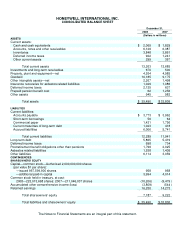 69
69 -
 70
70 -
 71
71 -
 72
72 -
 73
73 -
 74
74 -
 75
75 -
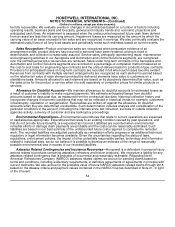 76
76 -
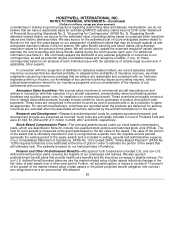 77
77 -
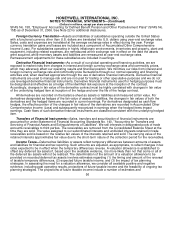 78
78 -
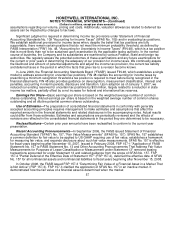 79
79 -
 80
80 -
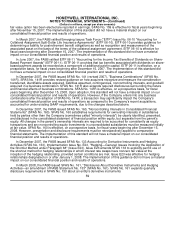 81
81 -
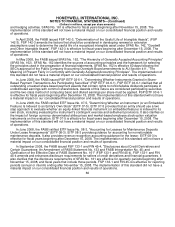 82
82 -
 83
83 -
 84
84 -
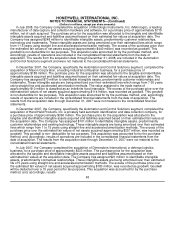 85
85 -
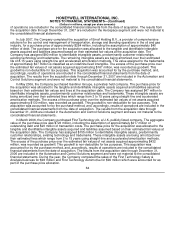 86
86 -
 87
87 -
 88
88 -
 89
89 -
 90
90 -
 91
91 -
 92
92 -
 93
93 -
 94
94 -
 95
95 -
 96
96 -
 97
97 -
 98
98 -
 99
99 -
 100
100 -
 101
101 -
 102
102 -
 103
103 -
 104
104 -
 105
105 -
 106
106 -
 107
107 -
 108
108 -
 109
109 -
 110
110 -
 111
111 -
 112
112 -
 113
113 -
 114
114 -
 115
115 -
 116
116 -
 117
117 -
 118
118 -
 119
119 -
 120
120 -
 121
121 -
 122
122 -
 123
123 -
 124
124 -
 125
125 -
 126
126 -
 127
127 -
 128
128 -
 129
129 -
 130
130 -
 131
131 -
 132
132 -
 133
133 -
 134
134 -
 135
135 -
 136
136 -
 137
137 -
 138
138 -
 139
139 -
 140
140 -
 141
141 -
 142
142 -
 143
143 -
 144
144 -
 145
145 -
 146
146 -
 147
147 -
 148
148 -
 149
149 -
 150
150 -
 151
151 -
 152
152 -
 153
153 -
 154
154 -
 155
155 -
 156
156 -
 157
157 -
 158
158 -
 159
159 -
 160
160 -
 161
161 -
 162
162 -
 163
163 -
 164
164 -
 165
165 -
 166
166 -
 167
167 -
 168
168 -
 169
169 -
 170
170 -
 171
171 -
 172
172 -
 173
173 -
 174
174 -
 175
175 -
 176
176 -
 177
177 -
 178
178 -
 179
179 -
 180
180 -
 181
181 -
 182
182 -
 183
183 -
 184
184 -
 185
185 -
 186
186 -
 187
187 -
 188
188 -
 189
189 -
 190
190 -
 191
191 -
 192
192 -
 193
193 -
 194
194 -
 195
195 -
 196
196 -
 197
197 -
 198
198 -
 199
199 -
 200
200 -
 201
201 -
 202
202 -
 203
203 -
 204
204 -
 205
205 -
 206
206 -
 207
207 -
 208
208 -
 209
209 -
 210
210 -
 211
211 -
 212
212 -
 213
213 -
 214
214 -
 215
215 -
 216
216 -
 217
217 -
 218
218 -
 219
219 -
 220
220 -
 221
221 -
 222
222 -
 223
223 -
 224
224 -
 225
225 -
 226
226 -
 227
227 -
 228
228 -
 229
229 -
 230
230 -
 231
231 -
 232
232 -
 233
233 -
 234
234 -
 235
235 -
 236
236 -
 237
237 -
 238
238 -
 239
239 -
 240
240 -
 241
241 -
 242
242 -
 243
243 -
 244
244 -
 245
245 -
 246
246 -
 247
247 -
 248
248 -
 249
249 -
 250
250 -
 251
251 -
 252
252 -
 253
253 -
 254
254 -
 255
255 -
 256
256 -
 257
257 -
 258
258 -
 259
259 -
 260
260 -
 261
261 -
 262
262 -
 263
263 -
 264
264 -
 265
265 -
 266
266 -
 267
267 -
 268
268 -
 269
269 -
 270
270 -
 271
271 -
 272
272 -
 273
273 -
 274
274 -
 275
275 -
 276
276 -
 277
277 -
 278
278 -
 279
279 -
 280
280 -
 281
281 -
 282
282 -
 283
283 -
 284
284 -
 285
285 -
 286
286 -
 287
287 -
 288
288 -
 289
289 -
 290
290 -
 291
291 -
 292
292 -
 293
293 -
 294
294 -
 295
295 -
 296
296 -
 297
297 -
 298
298 -
 299
299 -
 300
300 -
 301
301 -
 302
302 -
 303
303 -
 304
304 -
 305
305 -
 306
306 -
 307
307 -
 308
308 -
 309
309 -
 310
310 -
 311
311 -
 312
312 -
 313
313 -
 314
314 -
 315
315 -
 316
316 -
 317
317 -
 318
318 -
 319
319 -
 320
320 -
 321
321 -
 322
322 -
 323
323 -
 324
324 -
 325
325 -
 326
326 -
 327
327 -
 328
328 -
 329
329 -
 330
330 -
 331
331 -
 332
332 -
 333
333 -
 334
334 -
 335
335 -
 336
336 -
 337
337 -
 338
338 -
 339
339 -
 340
340 -
 341
341 -
 342
342 -
 343
343 -
 344
344 -
 345
345 -
 346
346 -
 347
347 -
 348
348 -
 349
349 -
 350
350 -
 351
351 -
 352
352
 |
 |

HONEYWELL INTERNATIONAL INC.
NOTES TO FINANCIAL STATEMENTS—(Continued)
(Dollars in millions, except per share amounts)
assumptions regarding our volume, pricing and costs. Additionally, valuation allowances related to deferred tax
assets can be impacted by changes to tax laws.
Significant judgment is required in determining income tax provisions under Statement of Financial
Accounting Standards No. 109 "Accounting for Income Taxes" (SFAS No. 109) and in evaluating tax positions.
We establish additional provisions for income taxes when, despite the belief that tax positions are fully
supportable, there remain certain positions that do not meet the minimum probability threshold, as defined by
FASB Interpretation ("FIN") No. 48, "Accounting for Uncertainty in Income Taxes" (FIN 48), which is a tax position
that is more likely than not to be sustained upon examination by the applicable taxing authority. In the normal
course of business, the Company and its subsidiaries are examined by various Federal, State and foreign tax
authorities. We regularly assess the potential outcomes of these examinations and any future examinations for
the current or prior years in determining the adequacy of our provision for income taxes. We continually assess
the likelihood and amount of potential adjustments and adjust the income tax provision, the current tax liability
and deferred taxes in the period in which the facts that give rise to a revision become known.
In June 2006, the Financial Accounting Standards Board ("FASB") issued FIN 48, which establishes a single
model to address accounting for uncertain tax positions. FIN 48 clarifies the accounting for income taxes by
prescribing a minimum recognition threshold a tax position is required to meet before being recognized in the
financial statements. FIN 48 also provides guidance on derecognition, measurement classification, interest and
penalties, accounting in interim periods, disclosure and transition. Upon adoption as of January 1, 2007, we
reduced our existing reserves for uncertain tax positions by $33 million, largely related to a reduction in state
income tax matters, partially offset by a net increase for federal and international tax reserves.
Earnings Per Share—Basic earnings per share is based on the weighted average number of common
shares outstanding. Diluted earnings per share is based on the weighted average number of common shares
outstanding and all dilutive potential common shares outstanding.
Use of Estimates—The preparation of consolidated financial statements in conformity with generally
accepted accounting principles requires management to make estimates and assumptions that affect the
reported amounts in the financial statements and related disclosures in the accompanying notes. Actual results
could differ from those estimates. Estimates and assumptions are periodically reviewed and the effects of
revisions are reflected in the consolidated financial statements in the period they are determined to be necessary.
Reclassifications—Certain prior year amounts have been reclassified to conform to the current year
presentation.
Recent Accounting Pronouncements—In September 2006, the FASB issued Statement of Financial
Accounting Standard ("SFAS") No. 157, "Fair Value Measurements" (SFAS No. 157). SFAS No. 157 establishes
a common definition for fair value to be applied to US GAAP requiring use of fair value, establishes a framework
for measuring fair value, and expands disclosure about such fair value measurements. SFAS No. 157 is effective
for fiscal years beginning after November 15, 2007. Issued in February 2008, FSP 157-1 "Application of FASB
Statement No. 157 to FASB Statement No. 13 and Other Accounting Pronouncements That Address Fair Value
Measurements for Purposes of Lease Classification or Measurement under Statement 13" removed leasing
transactions accounted for under Statement 13 and related guidance from the scope of SFAS No. 157. FSP
157-2 "Partial Deferral of the Effective Date of Statement 157" (FSP 157-2), deferred the effective date of SFAS
No. 157 for all nonfinancial assets and nonfinancial liabilities to fiscal years beginning after November 15, 2008.
In October 2008, the FASB issued FSP 157-3 "Determining Fair Value of a Financial Asset in a Market That
is Not Active" (FSP 157-3). FSP 157-3 clarified the application of SFAS No. 157 in an inactive market. It
demonstrated how the fair value of a financial asset is determined when the market
57
